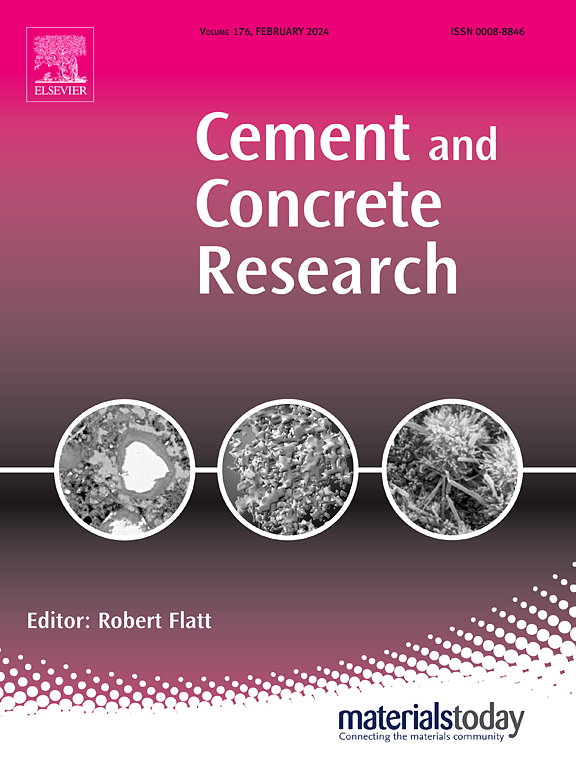Mechanistic insights into microstructural changes caused by stapling in extrusion-based 3D printed concrete (3DPC)
IF 13.1
1区 工程技术
Q1 CONSTRUCTION & BUILDING TECHNOLOGY
引用次数: 0
Abstract
Stapling is an effective post-implantation method for reinforcing three-dimensional (3D) printed concrete (3DPC); however, it may alter the microstructure of the adjacent concrete slurry. To uncover the mechanisms of microstructural alterations induced by stapling, remaining inadequately understood, we comprehensively characterized the microstructure of extrusion-based 3DPC with two viscosity levels, stapled using steels of five different diameters. The results suggest that the anchoring effect of the staples enhanced the interlayer bonding, while the formation of the staple-matrix interfacial defects decreased the compressive strength. These defects were non-uniformly distributed along the staples, and the 3DPC with higher viscosity exhibited more severe defects. The contribution of staple-matrix defects to mechanical strength was assessed based on defect ratio and connected length. Finally, a model was developed to capture the deformation of concrete slurry during the stapling process. These findings deepen the mechanistic understanding of the conflict between stapling reinforcement and interfacial weakness in 3DPC.
挤压型3D打印混凝土(3DPC)中钉接引起微观结构变化的机理研究
钉接是一种有效的加固三维打印混凝土的后注入方法;然而,它可能改变相邻混凝土浆体的微观结构。为了揭示钉接引起的微观结构改变的机制,我们全面表征了两种粘度水平的挤压型3DPC的微观结构,用五种不同直径的钢钉接。结果表明:订书钉的锚定作用增强了层间结合,而订书钉-基体界面缺陷的形成降低了材料的抗压强度;这些缺陷沿订书钉的分布不均匀,粘度越高的3DPC缺陷越严重。基于缺陷比和连接长度,评估了短钉基体缺陷对机械强度的贡献。最后,建立了混凝土浆体在钉接过程中的变形模型。这些发现加深了对3DPC中钉接增强与界面薄弱之间冲突的机理理解。
本文章由计算机程序翻译,如有差异,请以英文原文为准。
求助全文
约1分钟内获得全文
求助全文
来源期刊

Cement and Concrete Research
工程技术-材料科学:综合
CiteScore
20.90
自引率
12.30%
发文量
318
审稿时长
53 days
期刊介绍:
Cement and Concrete Research is dedicated to publishing top-notch research on the materials science and engineering of cement, cement composites, mortars, concrete, and related materials incorporating cement or other mineral binders. The journal prioritizes reporting significant findings in research on the properties and performance of cementitious materials. It also covers novel experimental techniques, the latest analytical and modeling methods, examination and diagnosis of actual cement and concrete structures, and the exploration of potential improvements in materials.
 求助内容:
求助内容: 应助结果提醒方式:
应助结果提醒方式:


